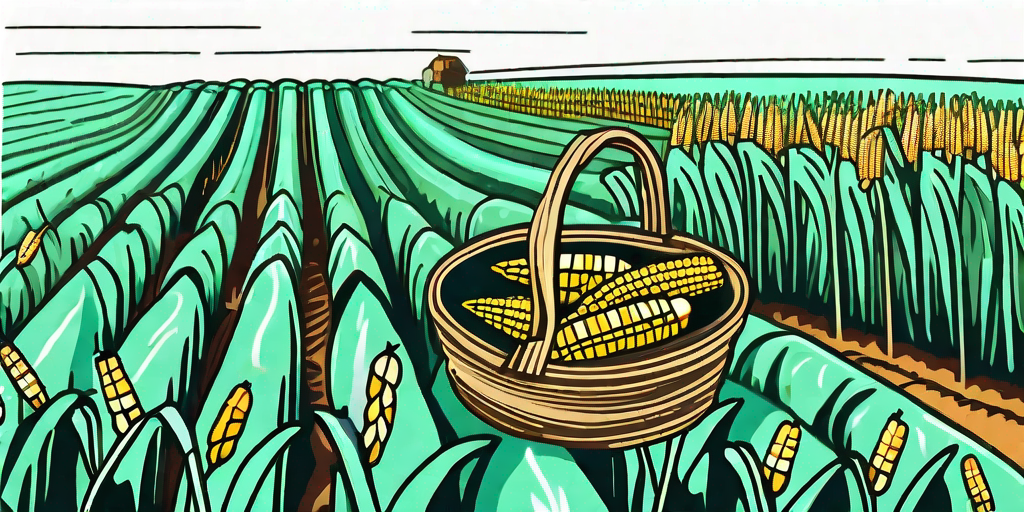
Greetings, corn enthusiasts! If you're here, it's probably because you've got a hankering for some homegrown, golden deliciousness. Or, you've accidentally stumbled upon this page while searching for popcorn recipes. Either way, stick around! You're about to embark on a journey into the world of corn harvesting that's as thrilling as a roller coaster ride. Well, a very slow, plant-based roller coaster ride.
The Basics of Corn Harvesting
Before we dive into the nitty-gritty, let's cover the basics. Corn, also known as maize, is one of the most widely grown crops in the world. It's versatile, nutritious, and let's face it, incredibly tasty. But, like any plant, it requires a certain level of care and attention to ensure a bountiful yield.
Harvesting corn isn't just about plucking cobs off stalks. It's a process that involves careful timing, proper technique, and a little bit of luck. But fear not, dear reader! With these tips and tricks, you'll be harvesting corn like a pro in no time.
When to Harvest
Timing is everything when it comes to corn harvesting. Harvest too early, and you'll be left with immature kernels that are more suited to a squirrel's diet than your dinner plate. Harvest too late, and you'll find your corn has turned starchy and tough, much like your grandmother's overcooked Sunday roast.
The key is to look for signs that your corn is ready to be harvested. The silks should be brown and dry, and the kernels should be plump and juicy. If you puncture a kernel with your fingernail, a milky liquid should squirt out. If it's clear, your corn isn't ready. If there's no liquid at all, you've waited too long. It's a delicate balance, much like a tightrope walker juggling flaming torches. But with a little practice, you'll get the hang of it.
How to Harvest
Once you've determined that your corn is ready for harvesting, it's time to get down to business. Start by grabbing the ear of corn at the base and twisting it until it breaks off from the stalk. It's a bit like popping the cork on a champagne bottle, but with less mess and more corn.
Be careful not to pull too hard, or you might end up with a handful of stalk instead of corn. And trust me, corn stalks don't make for a very satisfying meal. Once you've harvested your corn, it's time to store it. But we'll get to that in a bit.
Storing Your Corn
So, you've successfully harvested your corn. Congratulations! But don't start celebrating just yet. You've still got to store your corn properly to ensure it stays fresh and delicious.
Corn is best eaten fresh, straight off the stalk. But if you've got more corn than you can eat in one sitting (and if you've followed these tips, you probably do), you'll need to store it. The key is to keep it cool and dry to prevent it from spoiling.
Refrigeration
The easiest way to store corn is in the refrigerator. Simply place your corn in a plastic bag, squeeze out as much air as possible, and pop it in the crisper drawer. It should stay fresh for up to a week. But remember, the sooner you eat it, the better it will taste. So don't be shy about having corn for breakfast, lunch, and dinner. Your taste buds will thank you.
Freezing
If you've got a bumper crop of corn and want to preserve it for the long term, freezing is your best bet. Start by blanching your corn in boiling water for a few minutes, then plunge it into ice water to stop the cooking process. Once it's cool, cut the kernels off the cob and store them in freezer bags. They'll stay fresh for up to a year, giving you plenty of time to enjoy your harvest.
Common Corn Harvesting Questions
Now that we've covered the basics, let's tackle some common questions about corn harvesting. Because there's no such thing as a silly question when it comes to corn.
Can I eat corn straight off the stalk?
Absolutely! In fact, that's the best way to enjoy corn. Just make sure to wash it first to remove any dirt or bugs. And remember, the fresher the corn, the better it will taste. So don't be afraid to get out there and start harvesting!
How many ears of corn does one stalk produce?
Typically, a corn stalk will produce one to two ears of corn. However, with proper care and attention, it's possible for a stalk to produce up to four ears. So treat your corn with love, and it will love you back with plenty of delicious ears.
What do I do with the corn stalks after harvesting?
Don't toss those corn stalks in the trash! They can be used as mulch in your garden, providing valuable nutrients to your soil. Or, if you're feeling crafty, you can use them to make corn husk dolls or wreaths. Who knew corn could be so versatile?
Conclusion
And there you have it, folks! A comprehensive guide to corn harvesting that's sure to make your next harvest a success. Remember, the key is to pay attention to your corn, treat it with care, and harvest it at the right time. Do that, and you'll be rewarded with a bounty of delicious, homegrown corn. Happy harvesting!











